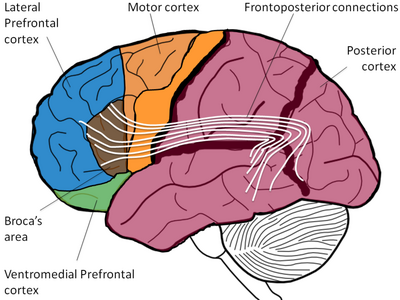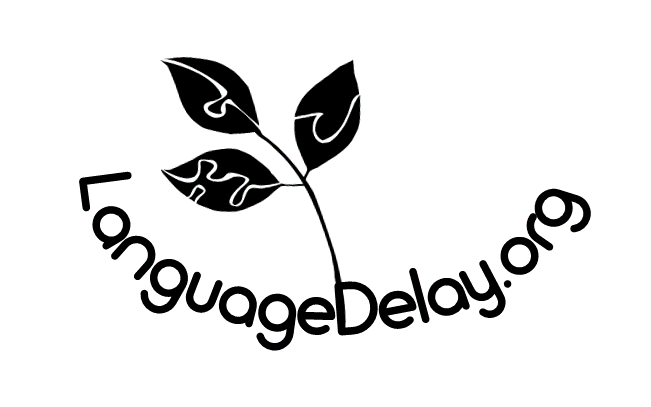Chapter 1
Drop Everything[edit]
It’s no secret that a child brings a dramatic change to our life. The sooner we adapt, the fewer regrets we have later. This is why many parents plan months, if not years, ahead for every step in a child’s life, from birth to college. Unfortunately, with autism, there’s no way to find out in advance. Nor do we have months to prepare. In fact, we don’t have any time at all. Like any medical condition, autism takes a while to manifest. By the time the first signs appear, the process has been well underway.
Reading the Signs[edit]
Can you solve a problem without admitting that you have one? Of course, not. And yet, there are few things that are harder for parents to accept than the possibility that their child has autism. Our instinct is to block the evidence until a medical authority rules on it. But the official diagnosis takes too long—ask any parent who’s been through it. You can’t wait for it. It may not happen until your child enters kindergarten, and by then, the entire early intervention period will have been wasted. You need to take action much sooner.
Ricardo first noticed his son’s unusual behavior when Rocco was still a baby. It took the family two years to come to full terms with his autism.
“He didn’t want to talk or look where we pointed. That was the first sign of trouble. We explained it away—he’s lazy. He didn’t look at you when you called his name—he’s stubborn. No desire to engage with people—maybe he’s too good for us, doesn’t want to mix. When he wanted something, he didn’t point to it or ask for help, he would grab your hand and use it as a tool. A big sign.
We did not connect any of this to autism. His older sister had typical development, and we thought we knew what to expect with him. He started walking at the right time. First words appeared, then stopped. When I told the pediatrician that he stopped talking, her eyes opened wide. Another sign. In retrospect, I knew what it meant. The pediatrician doesn’t want to be the first to give you the bad news. She was very careful with her words. ‘Let’s do an audiometric test to rule out a hearing problem… Let’s talk to a speech pathologist…’ I didn’t realize at the time what possibilities were on the table.
It was Rocco’s grandma who had the balls to say it. That night was a terrible night. My wife and I went on YouTube to see examples. There was no need for a psychiatrist, I could tell it was my kid. My wife and I are both professors. We had to stop fooling ourselves. We saw the data.”
Should you take the signs seriously? Autism Speaks, an excellent web resource for parents, has these tips:
What Are The Signs of Autism?[edit]
The autism diagnosis age and intensity of autism’s early signs vary widely. Some infants show hints in their first months. In others, behaviors become obvious as late as age 2 or 3. Not all children with autism show all the signs. Many children who don’t have autism show a few. That’s why professional evaluation is crucial. The following may indicate your child is at risk for an autism spectrum disorder. If your child exhibits any of the following, ask your pediatrician or family doctor for an evaluation right away:
By 6 months
- Few or no big smiles or other warm, joyful and engaging expressions
- Limited or no eye contact
By 9 months
- Little or no back-and-forth sharing of sounds, smiles or other facial expressions
By 12 months
- Little or no babbling
- Little or no back-and-forth gestures such as pointing, showing, reaching or waving
- Little or no response to name
By 16 months
- Very few or no words
By 24 months
- Very few or no meaningful, two-word phrases (not including imitating or repeating)
At any age
- Loss of previously acquired speech, babbling or social skills
- Avoidance of eye contact
- Persistent preference for solitude
- Difficulty understanding other people’s feelings
- Delayed language development
- Persistent repetition of words or phrases (echolalia)
- Resistance to minor changes in routine or surroundings
- Restricted interests
- Repetitive behaviors (flapping, rocking, spinning, etc.)
- Unusual and intense reactions to sounds, smells, tastes, textures, lights and/or colors
Why does this happen? Autism is a genetic disorder. Many different mutations can cause a shift in brain development. Some are hereditary and some occur spontaneously. The resulting changes make it difficult for your child to behave socially and master combinatorial language. From what we know now, it’s a life-long condition. However, the spectrum is wide, and where your child ends up depends very much on what happens during the first five years of his life.
The Miracle of the Human Child[edit]
Combinatorial language is unique to humans. Although animals have the ability to send and receive a variety of signals, we are the only species whose power of expression is unlimited. Not only can we describe to each other anything we’ve encountered, but we can conjure up at will and put in words scenarios that exist only in our minds.
We owe this gift to a set of “high-speed” connections between the front and the back of the brain. Without these connections, we would not be able to think, speak or understand the kinds of details that make up our normal use of language. And yet we are not born with them. The fast connections, including the combinatorial language-mediating arcuate fasciculus, develop during the first five years of life in response to our environment. This “custom” feature of our brain helps each generation adapt to the changes in our culture and physical surroundings.

Because so much of our brain development takes place after we’re born, humans take a long time to grow up. Most mammals reach social and physical maturity during the first months of life. By contrast, we spend a large portion of our lifespan as children. Delayed maturation is the price we pay for neuroplasticity. Not only does a child’s brain adapt easily to a new way of life, it can even make up for its own shortcomings. In his 1967 work The Biological Foundations of Language, Eric Lenneberg observed that children whose left hemisphere was surgically removed before the age of five (to treat cancer or epilepsy), grew up to function like any other adult. Astonishingly, a young child’s brain was able to “make do” with the one remaining hemisphere.
On the other hand, there are tragic examples of healthy children growing up mentally impaired because of neglect. When adults don’t speak to infants and toddlers—or involve them in social activities—nothing prompts the growing brain to produce the necessary hardware, and combinatorial language remains out of reach. This was the heart-breaking reality of poor orphanages in Romania in the 1990s, where children were discouraged from talking, and other language-deprived children around the world.
What about a child born into a loving family like yours?
While your child gets the same exposure to language as his peers, inside his mind things are different. The genetic mutations affecting his brain distort the flow of information and change his priorities. The usual ways of the world do not work for him. He tunes it out. Even though he is capable of figuring out what you’re saying, the task seems overwhelming or not worthwhile. The brain defaults to nonverbal activities, and, barring prompt intervention, the outcome is similar to that of a language-deprived child.
Josh started showing signs of autism around the age of two. It was impossible to get his attention. No eye contact. He preferred to be by himself. Then came the diagnosis, and with it, a string of experts, each promoting her own cure. Diet, ABA, karate, special programs. Despite their claims, they all seemed to push Josh further into his shell. Then his father, Alex, decided to try something new.
“instead of ‘fixing’ him, I wanted to find out what it felt like to be him. I noticed that he was easy to scare. Super sensitive to our tone of voice. A different tone—panic, end of the world. Something is missing—hysterics. A toy breaks— tragedy. I thought maybe it’s fear. Maybe the outside world is causing him too much stress. Maybe he can come out of his shell, but he doesn’t want to: it’s calmer inside. The contact may be hurting or scaring him. He is not expecting any joy from it.”
Alex found ways to make his son feel safe in his presence. He patiently waited for Josh to show him that he enjoyed his company. Alex’s efforts paid off. Josh warmed up to spending time together, and that opened the door to shared learning games and exercises. At the age of five, Josh started talking.
Time Is Not on Your Side[edit]
Josh’s success was not a fluke. His father did three things that worked in Josh’s favor. One, Alex realized that something in Josh’s world was keeping him from learning to speak—or interact with others in any way. Two, Alex was there for Josh to listen to his needs and make the changes. Finally, Alex didn’t wait: Josh made a series of breakthroughs before the critical age of five.
Is there something magical about the number five?
Neuroscience says yes, there is. The extraordinary neuroplasticity of the human child does not last forever. You may know from experience that it’s easier to learn a second language at a young age than later in life. However, as long as you’re willing to work at it, you can learn a foreign language at any age. Not so with your first language. The evidence is overwhelming that we need to start working on it before age five.
Remember the children who lost the left hemisphere of the brain and made full recovery? When the same procedure was performed on children older than five, they suffered a permanent loss of combinatorial language and related skills. In their case, the brain wasn’t able to rebuild the combinatorial language circuitry, as it did in younger children—proof that age five, or thereabout, is a “hard” deadline for acquiring language.
Similarly, a group of Romanian orphans placed in good foster care before age two completely escaped the consequences of earlier neglect. These and many other studies point to a special season for laying the foundation of combinatorial language. It runs between the ages of two and five—the period when every child develops high-speed connections between the front and the back of the brain.
By the end of this critical period, not only will your child acquire a new set of skills, he will clear out the obstacles that keep the learning process from taking place. He cannot do it on his own. He needs an environment that speaks to him while at the same time prompting him to change—until solid connections are formed in the brain. That is your job. It starts now. It is not simply better to start early, it is your child’s only chance.
